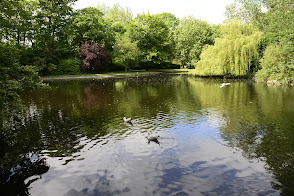
Dublin's Green Spaces and Parks: A Blend of Nature, History, and Recreation
Posted by Webjuice SEO Agency in Dublin on
Dublin boasts an impressive number of parks and green spaces, with over 302 parks and 66 green spaces within the city limits as of 2018. The city's parks span more than 1,500 hectares (3,700 acres), providing vast areas for both relaxation and recreational activities. Some of the most well-known parks include Phoenix Park, Herbert Park, St. Stephen's Green, Saint Anne's Park, and Bull Island.
Phoenix Park, located approximately 3 km (2 miles) west of the city center, is one of the largest urban parks in Europe, encompassing 707 hectares (1,750 acres). With its 16-kilometer perimeter wall, the park offers expansive areas of grassland, tree-lined avenues, and wildlife, including a herd of wild fallow deer that have roamed the park since the 17th century. This historic park is home to several landmarks, including the residence of the President of Ireland (Áras an Uachtaráin), Dublin Zoo, Ashtown Castle, and the official residence of the United States Ambassador. Additionally, the park hosts music concerts and public events, making it a popular destination for both locals and visitors.
In the heart of the city, St. Stephen's Green is a beautifully landscaped park located next to Grafton Street, one of Dublin's primary shopping areas. The park offers a peaceful retreat amidst the bustling urban environment and is surrounded by important office buildings, including those of public bodies. The park's proximity to a shopping center, named after it, makes it a central spot for both relaxation and entertainment.
Saint Anne's Park, the second-largest municipal park in Dublin, stretches across 500 acres in the Raheny and Clontarf areas on the Northside. This historic park was once part of a 2-square-kilometer estate acquired by members of the Guinness family in the mid-19th century. The park is a popular destination for outdoor activities, with well-maintained gardens, walking paths, and recreational facilities.
To the north of Dublin lies Bull Island, a unique natural area shared between Clontarf and Raheny. Bull Island is home to one of the largest beaches in the city, Dollymount Strand, offering a 5 km beach and picturesque views. The island's natural beauty attracts many visitors for beach walks, birdwatching, and relaxation.
Dublin’s park system also extends beyond these iconic spots, with many smaller, but equally charming, parks scattered across the city. These green spaces are essential to Dublin's urban landscape, providing residents and visitors with accessible outdoor areas for recreation, exercise, and nature appreciation.
City Boundaries and Growth
Dublin’s city boundaries have expanded significantly over time. Initially, the city was confined to the baronies of Dublin City and the barony of Dublin. However, since 1900, the city has absorbed many surrounding areas that were previously part of County Dublin. Major boundary changes include the transfer of urban districts such as Clontarf, Drumcondra, and Pembroke, along with the expansion into Finglas, Coolock, Ballyfermot, and other areas.
In 1985, Dublin underwent a significant boundary shift, which included returning areas like Phoenix Park and Santry to the city, while areas like Howth, Sutton, and parts of Kilbarrack were transferred out of Dublin. These changes reflect the city’s growth and development, incorporating more suburban areas into the urban core while maintaining the character and charm of Dublin’s parks and green spaces.